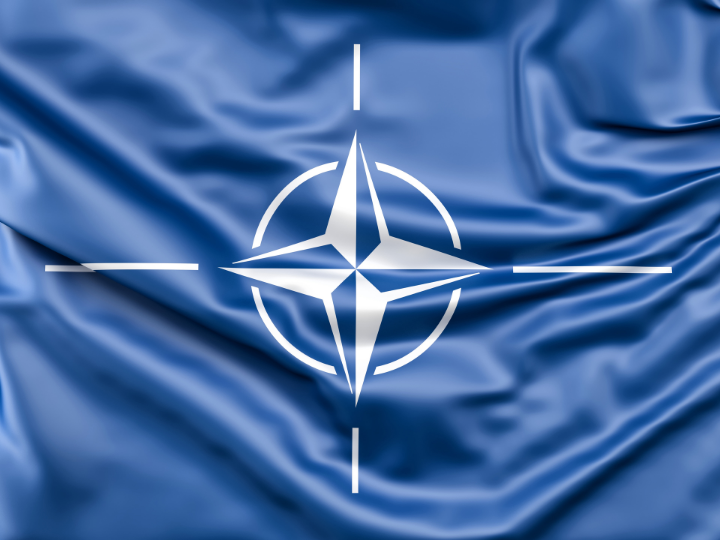by John R. Deni*
Later this week, NATO leaders will gather in Brussels for an extraordinary snap summit, building upon the defense ministerial last week and the virtual leaders’ summit held in late February 2022.
Top of the agenda will be adapting the alliance to the new normal in European security, characterized by a reckless, aggressive Russia apparently bent on re-establishing a sphere of influence across Eastern Europe. Part of NATO’s adaptation should include an uncompromising re-embrace of territorial defense.
To some degree, the alliance has been re-embracing territorial defense since 2014, when Russia first invaded Ukraine and illegally annexed Crimea.
The Kremlin’s actions then prompted a dramatic reappraisal of the alliance’s ways and means. As a result, defense spending grew across the alliance after having declined, on average, for nearly a quarter century. Equipment modernization was given a kickstart through these budgetary increases, and in some cases allies expanded their military manpower.
Readiness—an otherwise esoteric topic left to defense policy experts—became the subject of conversation among presidents and prime ministers as NATO expanded its exercises and rejuvenated its rapid response forces. And the alliance decided to deploy four 1,200-person multinational battlegroups among the three Baltic states and Poland on a persistent basis, to both help defend those countries and act as a kind of tripwire should Russia attack.
Today, though, these measures may not be enough to defend against Putin’s unpredictable military aggression. Although Putin is unlikely “mad,” no strategic logic can reasonably explain his economically, diplomatically, and militarily disastrous decision to invade Ukraine and brutalize its people.
Layered on top of this, the Kremlin’s demand that NATO roll back to its 1997 borders causes existential concern among the alliance’s newest members in Eastern Europe. Moreover, the increased presence of Russian forces in Belarus amounts to a kind of soft annexation of the latter, effectively pushing Russia’s borders farther west.
To adequately defend allied territory and bolster stability going forward, the alliance should consider several key strategic and operational moves.
Among the first of these is a more fulsome embrace of collective defense as the core NATO task for the foreseeable future. There’s no more appropriate vehicle for this than the alliance’s new strategy, which is currently under development. While it would be nice to think that NATO could devote equal attention to its other core tasks—crisis management and cooperative security—allied resources are not limitless. Given the scale of the Russia challenge, prioritization of collective defense makes sense.
At the operational level, a 360-degree approach to alliance security—that is, devoting equal attention to threats from all directions—seems equally a bridge too far, at least in the short run. Most of the major European allies are in the midst of trading capacity for capability; that is, they are limiting or even reducing total military force levels in order to invest in advanced military capabilities.
Although this effort at qualitative, technological improvement is necessary, it means NATO allies will be somewhat hampered in trying to achieve a more robust territorial defense capacity, especially as their more advanced capabilities take time to come online over the next several years.
Only by prioritizing the multifaceted threat from Russia—as well as China in terms of cyber threats—will the alliance best position itself to meet the demands of the new security environment in Europe.
As NATO places a priority on the collective defense threat from Russia, it should also move toward a posture of deterrence by denial across Eastern Europe.
This type of deterrence differs from what the alliance has primarily emphasized in recent decades—namely, deterrence by punishment. Under the latter, the alliance deters Russia by clearly indicating it will strike back in devastating fashion if Russia initiates aggression. NATO accomplishes this by stationing its multinational battlegroups across the Baltic states and Poland. These units are small and cannot hold off a large-scale Russian invasion, but they include troops from across the alliance, meaning that Russia would be taking on nearly all of NATO if it attacked into Estonia, Latvia, Lithuania, or Poland.
Under deterrence by denial, NATO’s posture in the East would need to be beefed up both qualitatively—to counter specific Russian offensive capabilities such as its artillery and rockets—and quantitively—to meet the scale of the Russian threat. The goal would be for NATO to stop and repel an attempted attack into allied territory, not merely respond to one after the fact.
This sounds appealing—especially if you live in Lithuania, for example—but it means the alliance will most likely need to return in some measure to larger scale territorial defense through so-called “in-place forces.” This doesn’t mean NATO needs to match Russian forces soldier-for-soldier or tank-for-tank, but it probably would mean a return to some level of conscription among more European allies, to keep costs relatively low while generating the necessary force levels.
The extraordinary summit this week provides the alliance an opportunity to further refine and strengthen its response to Russia’s actions in Ukraine as well as Belarus. By privileging the collective defense mission, at least temporarily shelving its 360-degree approach, and doubling down on territorial defense capabilities, NATO can go far in ensuring the war doesn’t expand.
*research professor at the U.S. Army War College’s Strategic Studies Institute and a nonresident senior fellow at the Atlantic Council
**first published in: carnegieeurope.eu




 By: N. Peter Kramer
By: N. Peter Kramer
